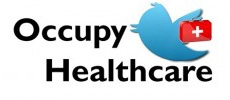I am disabled. I have Ehlers-Danlos Syndrome (EDS), a genetic disorder that keeps me in constant pain every minute of my life. It is an invisible disease. You could look at me, and if you saw past the leg braces I have conveniently hidden under loose fitting jeans, you would see an aging, long haired, failed rock star and not the tired soul who fights everyday just to get out of bed.
People I know wonder why I don’t visit them as often as I did a few years back. I try and tell them, but they always say, “Well you came out last month.” Well, last month, on that particular day, I probably felt OK. Doctors had a hard time figuring out what was wrong with me because of my past. I was an active child that had this talent reminiscent of Harry Houdini I would let local kids tie me up for five dollars, if I couldn’t get out, I owed them. I never lost.
You see, my joints dislocate at the drop of a hat. As a child, I thought it was because I was “double jointed.” When I got older, I was heavy into the rock scene, and was introduced to addiction. I self medicated for years, never feeling any pain. When I eventually got clean, I started to feel, and it hurt. At first I scratched it up to not being on drugs anymore, but the pain was taking over. I was on the verge of medicating myself again. I fell down one day, it was a good thing as I look back on it. I fell and had to go to the emergency room. While I was there, a friendly geneticist overheard me say, “EDS,” in discussing a possible diagnosis. She knew exactly what to do.
While the geneticist confirmed my guess—I had EDS—it was disheartening because there is no cure. I will be in constant, increasing pain until the day I die. I also had to become an addict of sorts. I say that because in the EDS community, we are not addicts, we are physically dependent on pain medications. I hated that. I learned how to deal with the inevitable depression that comes along with EDS and ways to get by.
For those affected by EDS, it’s crucial to tell doctors about it and educate everyone they know about this, so in the future, others will not have the hard times we all went through getting our official diagnosis.
Having Ehlers-Danlos Syndrome means that many things change. Just because you can’t see the changes doesn’t mean they aren’t real.
Michael Hyatt is a writer from North Carolina, and blogs at Limping on a Star. He recently started an EDS awareness campaign.
